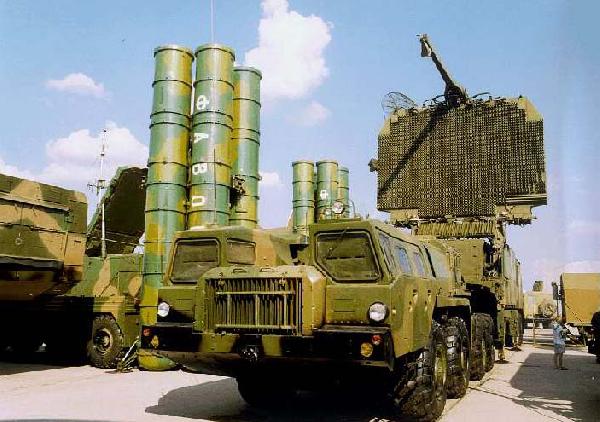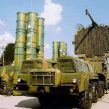
Tehran on the Brink of Procuring S-300 Missiles
Publication: Eurasia Daily Monitor Volume: 6 Issue: 194
By:

The Russian-Iranian deal on advanced S-300 long-range anti-aircraft missiles may go ahead despite U.S. and Israeli objections. This week the Interfax news agency quoted an unnamed government source confirming that the deal to sell Iran S-300 missiles had been “frozen” for several years, but Russia will not unilaterally legally invalidate it. According to the source, since the S-300 contract was “frozen,” Russia has not received any advance payments from Iran. The S-300 deal may or may not go ahead in the future, “depending on different political circumstances, since it is now more than simply a commercial contract” (Interfax, October 21).
According to Interfax, if Moscow decides to proceed, the missiles could be shipped to Iran immediately: they have been fully prepared, stockpiled, and ready for shipment in the defense ministry arsenals. The Interfax source directly connected the S-300 deal to the talks in Vienna on the Iran nuclear issue. Unnamed sources “close to Russia’s arms traders and arms producers” are quoted by Interfax as suggesting that: “If Russia does not fulfill its obligation to sell Iran S-300’s, this may undermine Russia’s reputation on the international arms trade market” (Interfax, October 21).
Since 1991, Russia has been a major supplier of modern arms to Iran, including MiG-29 jet fighters and Su-24 jet bombers, thousands of T-72 tanks, Kilo-class submarines, S-200 and Tor M1 anti-aircraft missiles. In 1995, a secret memorandum was signed by U.S. Vice President Al Gore and the Russian Prime Minister Victor Chernomyrdin to stop Moscow from selling arms to Iran in exchange for allowing commercial launches by Russian space rockets of foreign communication satellites containing U.S. technology.
In 2000, then President Vladimir Putin repudiated the Gore-Chernomyrdin memorandum and Moscow resumed signing arms contracts with Tehran. In December 2005, Moscow sold Iran 29 modern short-range Tor M1 anti-aircraft missile launchers with radars for $700 million. The Tor M1 missiles have a range of 12 kilometers (km) and can hit targets 6 km high. Reportedly, in the same year, a contract was signed to sell Iran S-300 missiles. The contract to sell S-300’s is reported to involve “five divisions of S-300 PMU1 anti-aircraft complexes” –40 to 60 anti-aircraft missile launchers each carrying four missile tubes, radars and control stations, with a combined value of $800 million. The S-300 PMU1 has a range of 150 km and can hit targets up to 27 km high (Kommersant, February 17).
The S-300 missiles earmarked for Iran are not newly built, but instead they are drawn from the Russian defense ministry inventory. The S-300 deal is highly profitable and arms traders want the deal with Iran to go through. The political decision to “freeze” the deal was taken by Putin and before he decides otherwise, it remains on hold. Tehran has pressed Moscow hard to deliver the S-300’s. In December 2008 the Iranian state news agency IRNA reported that after several years of negotiations to buy S-300’s Iran and Russia had finalized a deal, and that Tehran would take “delivery of the S-300 air defense system from Russia soon.” Tehran dismissed Israeli objections on the sale of S-300’s, announcing that, “Israelis are not able to damage Iranian-Russian friendly relations” (IRNA, December 21, 2008). However, Russian officials repudiated the statement and Iran is still awaiting a positive decision (Interfax, October 21). Now the waiting could be over.
Moscow has indicated its displeasure with Iranian intransigence over its nuclear program. But this week it was reported from Vienna that a draft agreement has been drawn up by the International Atomic Energy Agency (IAEA) between Iran the U.S., Russia and France to ship to Russia 1,200 kilograms of the 3.5 percent low-enriched uranium that Iran has produced (about 75 percent of its stockpile). There the uranium will be further enriched to 19.75 percent and sent to France to make fuel rods for a U.S.-built research reactor in Tehran that is used to produce radioisotopes for scientific and medical purposes (ITAR-TASS, October 21). This deal was hailed in the West as a sign of Iranian flexibility, since it seems to significantly reduce the amount of Iranian enriched uranium and lowers the immediate prospect of Tehran making a nuclear bomb (Reuters, October 21). However, this apparent breakthrough may come at a grave price if in exchange for its “flexibility” Iran finally gets the S-300’s from Moscow. Washington is currently praising Tehran for finally responding to Barack Obama’s outstretched hand and will not be in a strong position to do or say much if Moscow rewards Tehran with S-300’s.
Together with the Tor M1 and the older super long-range S-200 (provided by Russia in 1994) and the S-300 missiles Iran could build a solid multilayer anti-aircraft defense shield that could defend its nuclear facilities against a possible U.S. or Israeli air attack and inflict serious damage on any attacking force. Without the S-300’s Iran does not have any credible air defenses and its nuclear facilities are vulnerable to such attacks (Interfax, October 21). The possible price for showing “flexibility” to get the S-300’s by sending 1.2 tons of low-enriched uranium abroad may not be as significant as it seems. In 2008, Russia shipped to Iran some 82 tons of low-enriched uranium as nuclear fuel for the Bushehr nuclear power reactor and it is stored under the protection of an IAEA seal (RIA-Novosti, February 25). Iran could dip into that source to easily replace the uranium it may agree to send to Russia under the IAEA draft deal as soon as its nuclear facilities are protected by a credible air defense system from a devastating outside attack. The over-enthusiastic Obama administration might face a nasty surprise.




